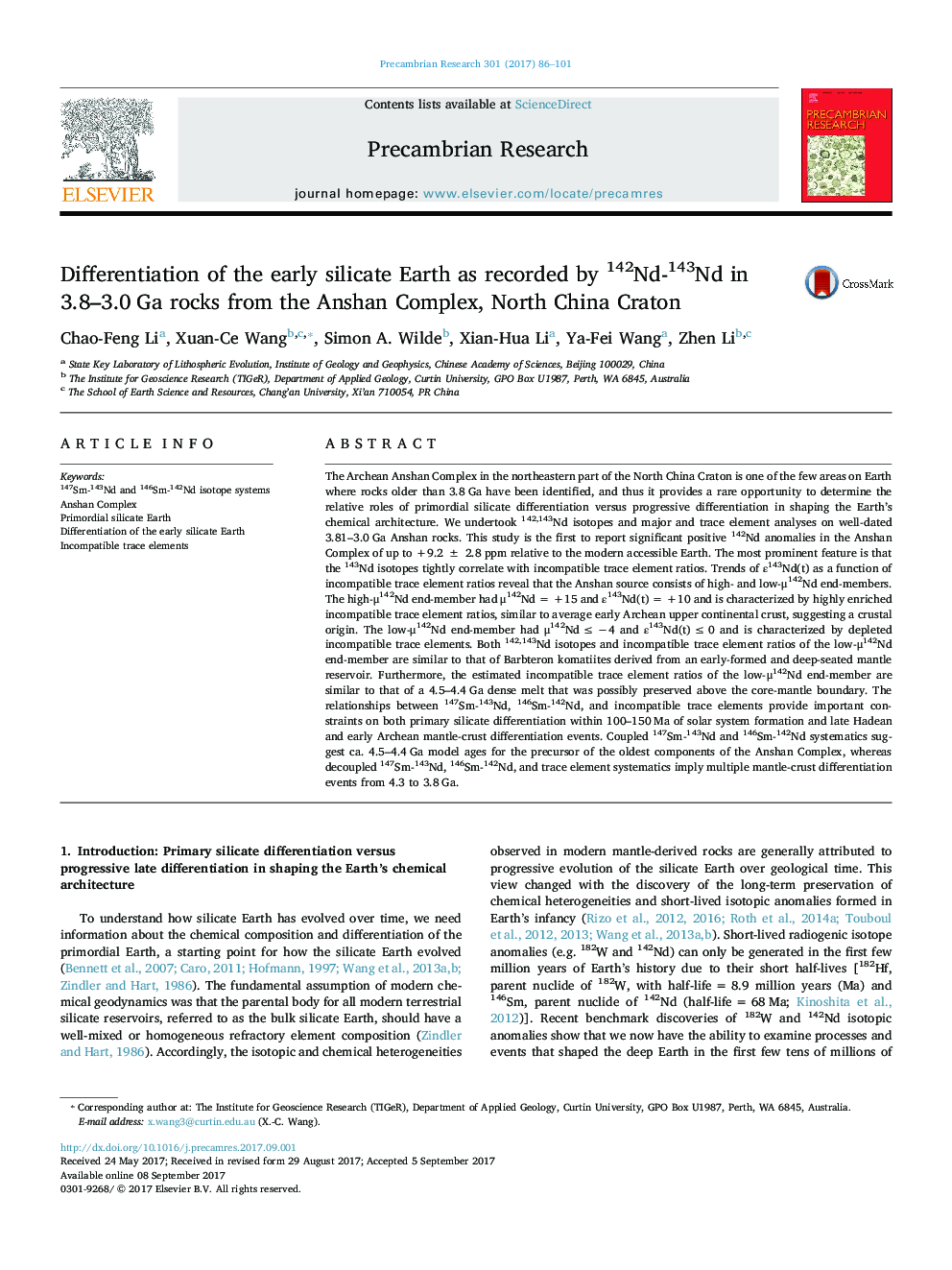| کد مقاله | کد نشریه | سال انتشار | مقاله انگلیسی | نسخه تمام متن |
|---|---|---|---|---|
| 5784668 | 1639574 | 2017 | 16 صفحه PDF | دانلود رایگان |

- Presence of well-resolved positive 142Nd anomalies in 3.8-3.1Â Ga Anshan Complex gneisses.
- Two end-member melts in the Anshan Complex record early chemical heterogeneity.
- 142Nd-143Nd of the Anshan Complex may record differentiation of the early silicate Earth.
The Archean Anshan Complex in the northeastern part of the North China Craton is one of the few areas on Earth where rocks older than 3.8 Ga have been identified, and thus it provides a rare opportunity to determine the relative roles of primordial silicate differentiation versus progressive differentiation in shaping the Earth's chemical architecture. We undertook 142,143Nd isotopes and major and trace element analyses on well-dated 3.81-3.0 Ga Anshan rocks. This study is the first to report significant positive 142Nd anomalies in the Anshan Complex of up to +9.2 ± 2.8 ppm relative to the modern accessible Earth. The most prominent feature is that the 143Nd isotopes tightly correlate with incompatible trace element ratios. Trends of ε143Nd(t) as a function of incompatible trace element ratios reveal that the Anshan source consists of high- and low-μ142Nd end-members. The high-μ142Nd end-member had μ142Nd = +15 and ε143Nd(t) = +10 and is characterized by highly enriched incompatible trace element ratios, similar to average early Archean upper continental crust, suggesting a crustal origin. The low-μ142Nd end-member had μ142Nd â¤Â â4 and ε143Nd(t) â¤Â 0 and is characterized by depleted incompatible trace elements. Both 142,143Nd isotopes and incompatible trace element ratios of the low-μ142Nd end-member are similar to that of Barbteron komatiites derived from an early-formed and deep-seated mantle reservoir. Furthermore, the estimated incompatible trace element ratios of the low-μ142Nd end-member are similar to that of a 4.5-4.4 Ga dense melt that was possibly preserved above the core-mantle boundary. The relationships between 147Sm-143Nd, 146Sm-142Nd, and incompatible trace elements provide important constraints on both primary silicate differentiation within 100-150 Ma of solar system formation and late Hadean and early Archean mantle-crust differentiation events. Coupled 147Sm-143Nd and 146Sm-142Nd systematics suggest ca. 4.5-4.4 Ga model ages for the precursor of the oldest components of the Anshan Complex, whereas decoupled 147Sm-143Nd, 146Sm-142Nd, and trace element systematics imply multiple mantle-crust differentiation events from 4.3 to 3.8 Ga.
Journal: Precambrian Research - Volume 301, October 2017, Pages 86-101